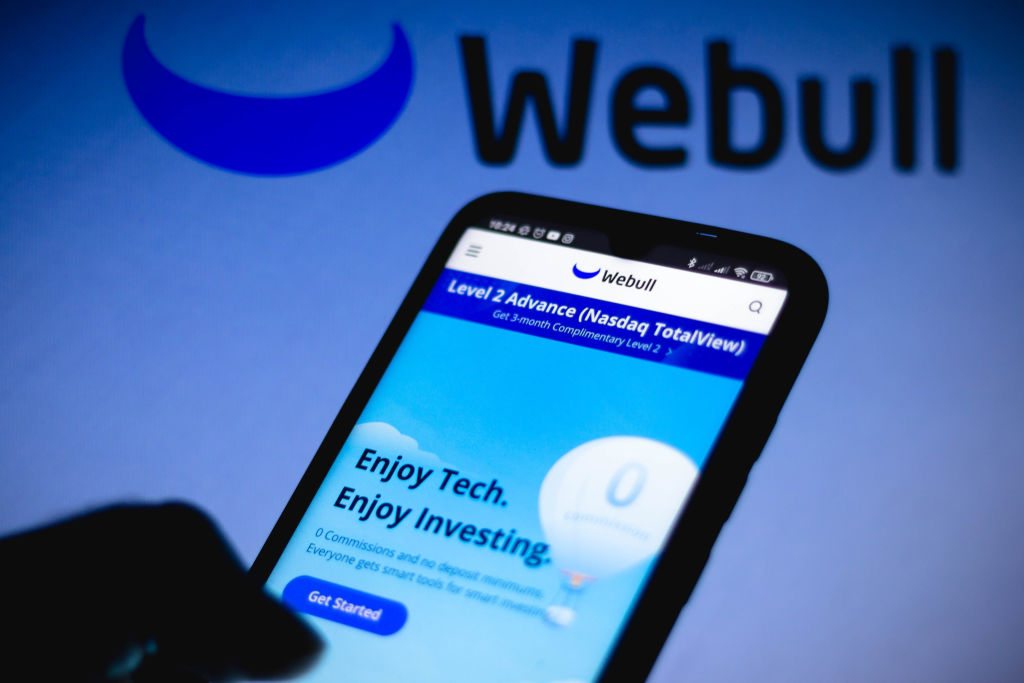The Best Options Trading Platforms
Among a sea of possibilities, here are five of the best options trading platforms for investors.


It's not an easy task to identify the best options trading platforms among a seemingly endless number of choices.
As an investor, getting your selection right is vital: The best options trading platforms can help you maximize your investment potential.
We'll take a deep dive into five of the best options trading platforms, including distinct features and potential drawbacks.
From just $107.88 $24.99 for Kiplinger Personal Finance
Become a smarter, better informed investor. Subscribe from just $107.88 $24.99, plus get up to 4 Special Issues

Sign up for Kiplinger’s Free Newsletters
Profit and prosper with the best of expert advice on investing, taxes, retirement, personal finance and more - straight to your e-mail.
Profit and prosper with the best of expert advice - straight to your e-mail.
We'll examine pros and cons so you can identify the one most suitable for your objectives and confidently embark on a rewarding journey into the world of call options and put options.
Here are five of the best options trading platforms for investors.
E*Trade

Pros:
- A comprehensive range of investment options: E*Trade offers a diverse array of investment choices, providing ample opportunities for portfolio diversification.
- User-friendly interface: The platform's intuitive layout makes it accessible to investors of all experience levels, including beginners.
- Educational resources: Access a wealth of educational materials to enhance your understanding of the markets and improve your investing acumen.
Cons:
- Commission fees: E*Trade's commission structure can be relatively high, compared with some other platforms, potentially affecting your overall trading costs.
- More on fees: E*Trade charges commissions on both sides of a trade, which can result in higher-than-average commissions for those placing less frequent options trades.
InteractiveBrokers

Pros:
- Versatility and global market access: InteractiveBrokers caters to investors with diverse needs, offering advanced analytical tools and access to global markets.
- Robust research: Gain access to in-depth market research and analysis, enabling you to make informed investment decisions.
- Professional-grade platform: Ideal for seasoned investors seeking advanced features and tools.
Cons:
- Learning curve: The platform's extensive features might require a learning curve, especially for investors new to the world of options trading.
Webull

Pros:
- Seamless experience: Webull offers a smooth and user-friendly platform, suitable for investors of all levels.
- Paper trading: Practice risk-free with Webull's paper trading feature, allowing you to refine your strategies before committing real funds.
- Advanced charting: Benefit from advanced charting tools for technical analysis and trend identification.
Cons:
- Customer support: Some users have reported limited customer support options, potentially affecting timely resolution of issues.
- Educational resources: While Webull offers educational materials, they might not be as comprehensive as other platforms, especially for in-depth research.
Thinkorswim (by TD Ameritrade)

Pros:
- Advanced tools: Thinkorswim stands out with its advanced charting, technical analysis and customizable trading strategies, empowering investors with sophisticated tools.
- Extensive research: Access a wealth of research tools and data for thorough analysis and market insights.
- Professional-grade platform: Ideal for seasoned investors seeking robust features and tools.
Cons:
- Learning curve: The platform's advanced features might require time and effort to fully grasp, especially for investors transitioning to more complex trading strategies.
- Complexity for novices: Beginners might find the platform overwhelming due to its professional-grade tools and extensive capabilities.
Tastytrade

Pros:
- Built for retail traders: Created by the same team that developed TD Ameritrade's thinkorswim platform, tastytrade (formerly tastyworks) was designed specifically with retail traders in mind.
- User-friendly commission structure: Tastytrade doesn't charge commission for closing positions (only opening positions) and caps fees at $10 per leg for any options trade, no matter the size of the trade. This results in a truly competitive fee structure.
- Fundamental analysis: Although tastytrade is all about option strategies, it includes a fundamental analysis tab on both its desktop and its browser platforms.
- Focus on trading rather than investing: Tastytrade offers robust option analytics and tools for traders, allowing for relatively pain-free position creation and trade management.
Cons:
- Focus on trading rather than investing: This is both a pro and a con. Investors may feel underwhelmed, as there are limited investment choices.
FAQs about the best options trading platforms
- Are these platforms suitable for both stock and options trading? Absolutely! All mentioned platforms support both stock and options trading, offering comprehensive investment options.
- Do these platforms offer mobile trading options? Yes! Each platform provides mobile trading apps, enabling you to stay connected to the markets and execute trades on the go.
- Are commission fees applicable for all trades? While some platforms offer commission-free trades, others might charge fees for certain types of transactions. It's essential to review the fee structure of each platform.
Related content
Profit and prosper with the best of Kiplinger's advice on investing, taxes, retirement, personal finance and much more. Delivered daily. Enter your email in the box and click Sign Me Up.

Jared Hoffmann is a highly respected financial content creator and options expert, holding a journalism degree from San Francisco State University. Formerly a Senior Options and Day Trading Editor and on-air personality at Money Morning, he excels in delivering comprehensive options education, technical analysis, and risk management education to traders.
-
 Stocks End Volatile Year on a Down Note: Stock Market Today
Stocks End Volatile Year on a Down Note: Stock Market TodayAfter nearing bear-market territory in the spring, the main market indexes closed out the year with impressive gains.
-
 How We Manage Our Finances Together: 'When You Keep Score, You Can End Up Resentful'
How We Manage Our Finances Together: 'When You Keep Score, You Can End Up Resentful'Douglas Boneparth, a certified financial planner, and his wife, Heather Boneparth, speak with Kiplinger about couples managing finances.
-
 I'm 45 and I've barely invested in the stock market. I recently inherited $50,000. What should I do?
I'm 45 and I've barely invested in the stock market. I recently inherited $50,000. What should I do?What should you do with a big inheritance? We asked a financial expert for advice.
-
 Stocks End Volatile Year on a Down Note: Stock Market Today
Stocks End Volatile Year on a Down Note: Stock Market TodayAfter nearing bear-market territory in the spring, the main market indexes closed out the year with impressive gains.
-
 I’m 45 and I’ve Barely Invested in the Stock Market. I Recently Inherited $50,000. What Should I Do?
I’m 45 and I’ve Barely Invested in the Stock Market. I Recently Inherited $50,000. What Should I Do?What should you do with a big inheritance? We asked a financial expert for advice.
-
 A Contrarian Approach Pays Off for This Bond Fund
A Contrarian Approach Pays Off for This Bond FundThe Dodge & Cox Income Fund has outperformed in 2025 thanks to its managers' fearless approach.
-
 7 Outrageous Ways Retirees Can Invest Their Money in 2026
7 Outrageous Ways Retirees Can Invest Their Money in 2026Stocks and bonds aren't the only ways to invest your retirement "fun money."
-
 7 Creative Ways to Spend Less and Save More In Retirement, Courtesy of a Financial Pro
7 Creative Ways to Spend Less and Save More In Retirement, Courtesy of a Financial ProWorried you won't have enough money later in life? Try redesigning your vision of retirement, and you may find your savings go further than you thought.
-
 I'm an Annuities Pro: This Is How You Can Cover the Income Gap While Your Social Security Benefits Grow
I'm an Annuities Pro: This Is How You Can Cover the Income Gap While Your Social Security Benefits GrowTaking Social Security later results in higher future income, but that can create an income gap. Annuities can boost income until you file for benefits.
-
 Stocks Extend Losing Streak After Fed Minutes: Stock Market Today
Stocks Extend Losing Streak After Fed Minutes: Stock Market TodayThe Santa Claus Rally is officially at risk after the S&P 500's third straight loss.
-
 Where to Stash Cash as Yields Fall, According to Advisers
Where to Stash Cash as Yields Fall, According to AdvisersYour best options depend on how soon you'll need the money and your tolerance for risk.